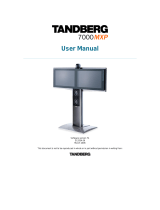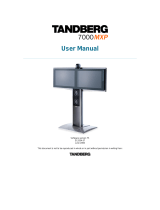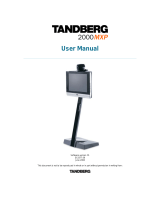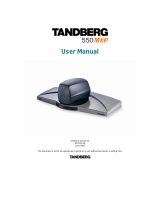Page is loading ...

IT-FHD-MR60
Integrated Audio/Video
Communication Terminal
User-Manual

1
Contents
1. Foreword ................................................................................................................................... 3
1.1 Target Object ................................................................................................................. 3
1.2 Safety Cautions ............................................................................................................. 3
1.2.1 Basic Requirements ........................................................................................... 3
1.2.2 Environmental Requirements ............................................................................ 3
1.2.3 Notice for Use ................................................................................................... 4
1.2.4 Technical Support ............................................................................................. 4
2. Device Installation .................................................................................................................... 5
2.1 Installation of Device, and Startup & Shutdown .......................................................... 5
2.2 Instructions for Use of Remote Control ........................................................................ 6
2.3 Descriptions of Indicator Light ..................................................................................... 6
3. Main Interface ........................................................................................................................... 7
4. Camera Control ......................................................................................................................... 9
4.1 Adjustment of Camera .................................................................................................. 9
4.2 Preset Position ............................................................................................................. 10
5. Call .......................................................................................................................................... 11
5.1 Manual Input of Number............................................................................................. 11
5.2 Call from Call History ................................................................................................ 12
5.3 Call from Address Book .............................................................................................. 13
5.4 Answering a Call ......................................................................................................... 14
5.5 Multipoint Conference ................................................................................................ 15
5.6 In the Call .................................................................................................................... 16
5.7 Auxiliary Stream Control ............................................................................................ 18
5.8 Keypad ........................................................................................................................ 20
5.9 Hang Up ...................................................................................................................... 20
6. Information ............................................................................................................................. 21
6.1 System Information ..................................................................................................... 21
6.2 Active Alerts ............................................................................................................... 22
6.3 Network ...................................................................................................................... 23
6.4 Server .......................................................................................................................... 24
6.5 Call Statistics .............................................................................................................. 25
6.6 Call Control ................................................................................................................. 25
6.7 Call Usage ................................................................................................................... 26
6.8 Audio .......................................................................................................................... 27

2
7. Settings.................................................................................................................................... 28
7.1 General ........................................................................................................................ 29
7.1.1 Setting Audio Input ......................................................................................... 30
7.1.2 Setting Auto Sleep Time ................................................................................. 31
7.2 Language ..................................................................................................................... 31
7.3 Date and Time ............................................................................................................. 33
7.3.1 Changing Time Zone ....................................................................................... 34
7.3.2 Changing Time Server .................................................................................... 34
7.3.3 Changing Time Display Format ...................................................................... 36
7.4 Network ...................................................................................................................... 36
7.4.1 Setting IPv4 Address ....................................................................................... 37
7.4.2 Setting IPv6 Address ....................................................................................... 38
7.4.3 Setting Wi-Fi ................................................................................................... 39
7.4.4 Setting Mobile Network .................................................................................. 42
7.5 Diagnose ..................................................................................................................... 42
7.5.1 Ping ................................................................................................................. 42
7.5.2 Color Bars ....................................................................................................... 43
7.5.3 Speaker Test .................................................................................................... 44
7.5.4 Loopback Test ................................................................................................. 44
7.5.5 Reset System ................................................................................................... 45
7.5.6 Restart System................................................................................................. 45

3
1. Foreword
This manual introduces the usage of IT-FHD-MR60 audio/video terminal from the installation,
system configuration, conference call, conference control, fault diagnosis and administration.
1.1 Target Object
This manual is applicable to, but not limited to, the terminal users.
The terminal users are available to operate all menus on interface with remote control.
1.2 Safety Cautions
Please read carefully and strictly follow the safety cautions during everyday operation and
maintenance.
1.2.1 Basic Requirements
Keep dry during the storage, transportation and use of device.
Avoid intense collision.
Do not dismantle the device personally without permission. In case of any failure, please contact
the designated maintenance service.
Without authorization, no unit or individual is allowed to change the structure, safety and
performance design of the device.
The personnel who are responsible for installation and maintenance of the device should be
properly trained to master the correct operations and safety cautions before installing, operating
and maintaining device, and dismantling safety facilities and repairing device.
The use of this device should follow the related laws and regulations, and respect other people's
legal rights
1.2.2 Environmental Requirements
Please install the device in strict accordance with the factory requirements.
Put the device on a stable worktable. The wall-mounted type should be hung in strict accordance
with factory requirements.
Please put the device in a well-ventilated place without direct strong light.
Do not put the device and its accessories in a place with low or high temperature.
Keep the device away from water or moist areas.
Do not put any object on top of the device. It is recommended to leave at least 10cm at four
sides for heat dissipation.
Do not put the device too close to the inflammable objects such as foam materials.
Keep the device clean.
When placing the device, please stay away from heat source or open fire, such as electric heater,
candle, etc.
When placing the device, please stay away from electric appliances with high-intensity

4
magnetic field or strong electric field, such as microwave oven, refrigerator, mobile phone, etc.
1.2.3 Notice for Use
Keep the device and its accessories out of the reach of children, so as to prevent choking
hazard due to play of package, or danger due to swallowing of any small accessories.
To prevent static electricity on human body from damaging sensitive components, please
wear antistatic wrist strap, with one end properly grounded, before touching the device
and holding the electric socket, circuit board and IC chip.
Please use the attached accessories and the fittings recommended by the factory, such as
power adapter, battery, etc.
Make sure the power supply voltage meets the input voltage of device. Please use the
attached anti-thunder patch board.
Make sure the three-phase socket is properly grounded, and not to inversely connect the
naught wire and live wire.
Please connect the earth wire of main machine before connecting other wires. When
removing the wires, the earth wire should be removed in the end.
Please keep the plug clean and dry. Do not use the broken or aged cable, or otherwise it
may lead to electric shock.
To avoid failure, do not step on, pull or excessively bend the cable.
Do not scrape or wear the enclosure, or otherwise the paint peeled off may cause allergy
to human body or fall into main machine and cause short circuit.
Please prevent foreign objects (such as metal) from getting into the device through heat
emission hole, which may lead to abnormity.
Keep both hands dry when plugging and unplugging the wire.
Do not drop any water or other liquid into the device. In case liquid flows into the device
accidentally, please cut the power supply immediately, unplug all wires such as power
line, video line, audio line, and network cable, and contact our designated maintenance
service.
In case of anomalies, such as smoke, abnormal noise or smell, please stop using and cut
the power immediately, unplug all wires such as power line, video line, audio line, and
network cable, and contact our designated maintenance service.
In thunderstorm weather, please disconnect the power supply, and unplug all wires such
as power line, video line, audio line, and network cable to prevent lightning risk.
Please disconnect the power supply and unplug all wires such as power line, video line,
audio line, and network cable if the device will not be used for a long time.
1.2.4 Technical Support
If there is any terminal problem, please feel free to contact our technical support.

5
2. Device Installation
This chapter explains how to install the device, check the internet access, start the device and
switch off power supply, as well as the system indicator.
It also introduces the setup guide for completion of basic terminal configuration, such as
system language, time zone, network, etc.
2.1 Installation of Device, and Startup & Shutdown
Please install the terminal according to Quick Installation Guide.
After connecting all devices to the terminal, connect the power supply and power it on.
Note
When the power supply of terminal is on, please prevent the power connection from
getting off the terminal and leading to outage.
Please shut the terminal, and switch off external power supply (such as socket power)
before unplugging the power line
Please follow the requirements below to check whether power line and power adapter are
correctly and reliably connected to relevant devices.
Make sure the AC supply voltage is within 100V~240V, and the frequency is 50Hz or
60Hz.
The sequential definition of live wire (L), naught wire (N), and protective earth wire (PE)
and the corresponding voltage difference meet the international standard, and the PE is
properly grounded.
To turn on power supply of terminal, please turn the power switch on rear panel to ON position.
To shut the terminal, follow any one of the operations below:
Press and hold the button on remote control to shut the terminal. To turn it on next
time, press it again.
In Web management system, select menu “Admin Shutdown/Restart”, and click
“Shutdown System” button on the page to the right. To turn on the terminal again, press
the button on remote control.
Turn the power switch on rear panel to OFF position to turn off the terminal directly. To
turn on again, just turn the power switch to ON position.

6
2.2 Instructions for Use of Remote Control
All functions in TV interface can be operated through remote control.
2.3 Descriptions of Indicator Light
Status of Indicator Light
Status of Terminal
Green light on
Normal working
Green light flashes
Remote control signal is received
Green and red lights flash alternately
Making a call
Green and red lights flash alternately
Calling
Green and red lights on
System hibernation
Green light flashes
System shutdown
Green and red lights flash at the same time
System update
Red light flashes
System fault
Green light flashes
System booting

7
3. Main Interface
After the first initialization, the system will enter main interface every time it is started up, as Figure
3-1 shows.
Figure 3-1 Main Interface
From top to bottom:
Top center: display the terminal name
Top right: display the date and time of terminal
Middle video area: display the primary video image
Left and right side of video area: display the main menu items
Bottom left: display the terminal IPv4 address and network status, as Figure 3-2 shows.
Bottom middle: display E.164 number of terminal
Bottom right: If audio is disabled, it will display ; if it’s in mute mode, it will display ,
as Figure 3-3 shows.
Figure 3-2 IP Address and Network Status

8
Network Status
Description
It means terminal is connected through wired network, and
has acquired IP address.
It means terminal is connected through wired network, but
has not acquired IP address. Please check whether the
network cable is properly connected.
It means Wi-Fi function of terminal is enabled, but no
network connection is configured.
It means the terminal uses wireless access, and the Wi-Fi
signal strength.
It means the terminal cannot search Wi-Fi signal.
It means the terminal cannot receive Wi-Fi signal.
It means the terminal uses wireless access and the Wi-Fi
signal strength.
Figure 3-3 Audio Disabled and Mute
Press the up, down, left, and right direction keys on remote control, the selected menu will be displayed
with white frame, and press “OK” to enter the detail interface of this menu. This manual will introduce
the following contents in detail:
Camera Control Operations
Call
Call History
Contacts
Message
Settings

9
4. Camera Control
This chapter explains how to adjust camera position and focus, set budget, and select video sources,
etc.
4.1 Adjustment of Camera
Press the up, down, left, right, zoom in/out keys on remote control to enter camera position adjustment
interface, as Figure 4-1-1 shows.
Figure 4-1-1 Adjustment of Camera Position
Specific operations are as follows:
Press down key: the camera will move down, and the icon will be highlighted.
Press up key: the camera will move up, and the icon will be highlighted.
Press left arrow key: the camera will move left, and the icon will be highlighted.
Press right arrow key: the camera will move right, and the icon will be highlighted.
Press zoom-in: zoom in camera image, and the icon will be highlighted.
Press zoom out: zoom out camera image, and the icon will be highlighted.
If adjusting local camera, the icon will be highlighted.
If adjusting remote camera, the icon will be highlighted.

10
4.2 Preset Position
Preset position is easy to move the camera to designated position quickly. Press “Preset Position” on
remote control to enter preset position interface, as Figure 4-2-1 shows.
Figure 4-2-1
Long press any number key from 0 to 9, the interface will prompt “Capturing screenshot…”, and a
preset position is then set, as Figure 4-2-2 shows.
Figure 4-2-2 Preset Position 2 is Set
Press any number key from 0 to 9, the system will select the preset position previously set and the
camera will then be adjusted to that position accordingly.

11
5. Call
Select “Call” from main interface and press OK or “Call” on the remote control to enter call interface,
as Figure 5-1 shows.
Figure 5-1
5.1 Manual Input of Number
Input “number” in input box and press “call” button to call, as Figure 5-1-1 shows.
Figure 5-1-1
In call waiting, press OK button or red “Hang Up” to cancel the call.

12
5.2 Call from Call History
Select “Call History” from main interface and press OK to enter call history interface, as Figure 5-2-
1 shows.
Figure 5-2-1
Or, enter call interface, and select “Call History”, as Figure 5-2-2 shows.
Figure 5-2-2
Select one of the call histories using up and down keys on remote control, and press OK to call.

13
5.3 Call from Address Book
Select “Address Book” from main interface and press OK to enter address book interface, as Figure
5-3-1 shows.
Figure 5-3-1
Or, enter call interface, and select “Address Book”, as Figure 5-3-2 shows.
Figure 5-3-2
Select one of the call histories using up and down keys on remote control, and press OK to call.

14
5.4 Answering a Call
When there is an incoming call, the system will give an incoming ring and show the call information,
as Figure 5-4-1 shows.
Figure 5-4-1
Select “Reject” and press OK to reject the incoming call.
Select “Answer” and press OK to answer the call and enter the call status, as Figure 5-4-2 shows, when
the call duration will be shown at the left bottom of call interface.
Figure 5-4-2
Press “Picture in Picture” button on remote control, the system will switch the layout automatically.

15
If the terminal is in the conference:
Multipoint videoconference function in license information is enabled:
If there is a new incoming call
Multipoint videoconference function in license information is not enabled
5.5 Multipoint Conference
When multipoint videoconference function is enabled, the terminal can be used as MCU for multipoint
videoconference. If multipoint videoconference is not enabled, skip to the next chapter.
If the terminal is in the call, when there is a new incoming call, the system will pop out a dialog box
to remind users of the new incoming call.
Select “Answer” and press “OK” button on remote control to add the new incoming call,
when the terminal will enter the multipoint videoconference mode, as Figure 5-5-1 shows.
Figure 5-5-1
Select “Reject”, and press “OK’ button on remote control to reject this call.
Select “Hang Up + Answer”, and press “OK” button on remote control to end current
call and establish a point-to-point connection with new terminal.
Press “Picture in Picture” button on remote control, the system will switch the layout
automatically.

16
5.6 In the Call
Press “Information” button on the remote control, the system will display the detailed information of
participants, as Figure 5-6-1 shows.
Figure 5-6-1
Press “Menu” button on remote control, the system will display function menu, as Figure 5-6-2 shows.
Figure 5-6-2
Call Management
Press the up and down direction keys on remote control, select “Call Management” and press “OK”
to display call management interface, as Figure 5-6-3 shows.

17
Figure 5-6-3
1) Hang Up All
Select “Hang Up All” with remote control and press “OK” button to hang up all calls and end the
conference.
2) Hang Up
Select the line of call with remote control, and press “OK” button to hang up the call.
Add a call
Press the up and down direction keys on remote control, select “Call Management” menu and press
“OK” button, the system will display the call interface. For specific operations, please see 5.1 Manual
Input of Number, 5.2 Call from Call History, and 5.3 Call from Address Book.
Press “Home” button on the remote control to return to main interface, as Figure 5-6-4 shows:
Figure 5-6-4
Select “Back to Call”, and press “OK” button on remote control to return to call.

18
5.7 Auxiliary Stream Control
During the call, if an auxiliary stream is connected, the system will send the auxiliary stream to
participants.
Auxiliary stream control has two modes:
1) “Menu” button on remote control
Press “menu” button on remote control to display operation menu, as Figure 5-7-1 shows:
Figure 5-7-1
In addition to “Call Management”, “Add a Call”, and “Keypad” (see 5.6 In the Call), the menu list
also contains “Stop Presentation”. Select “Stop Presentation” and press “OK” button on remote control
to stop sending auxiliary stream. Then, press “menu” button on remote control, there will be “Call
Management”, “Add a Call” and “Start Presentation” under the menu. Select “Start Presentation” and
press “OK” button on remote control to send the auxiliary stream.
2) Main Interface Control
Press “Home” button on the remote control to return to main interface, as Figure 5-7-2 shows:

19
Figure 5-7-2
Select “Stop Presentation”, and press “OK” button on remote control to stop sending auxiliary stream,
as Figure 5-7-3 shows.
Figure 5-7-3
Select “Start Presentation”, and press “OK” button on remote control to send sending auxiliary stream,
as Figure 5-7-2 shows.
/






